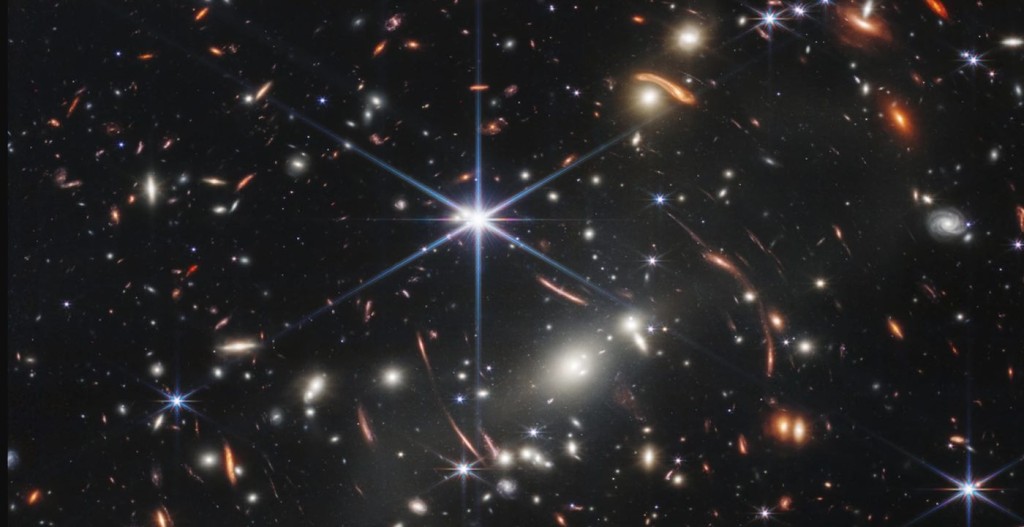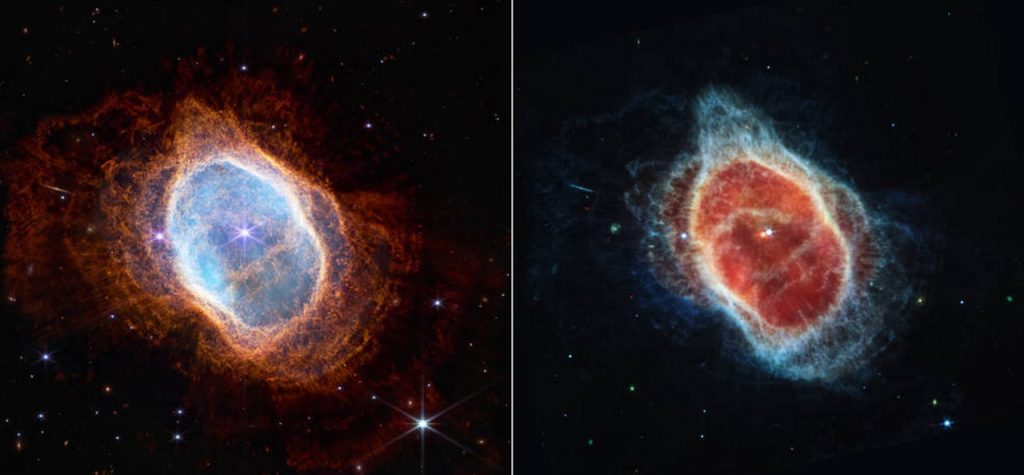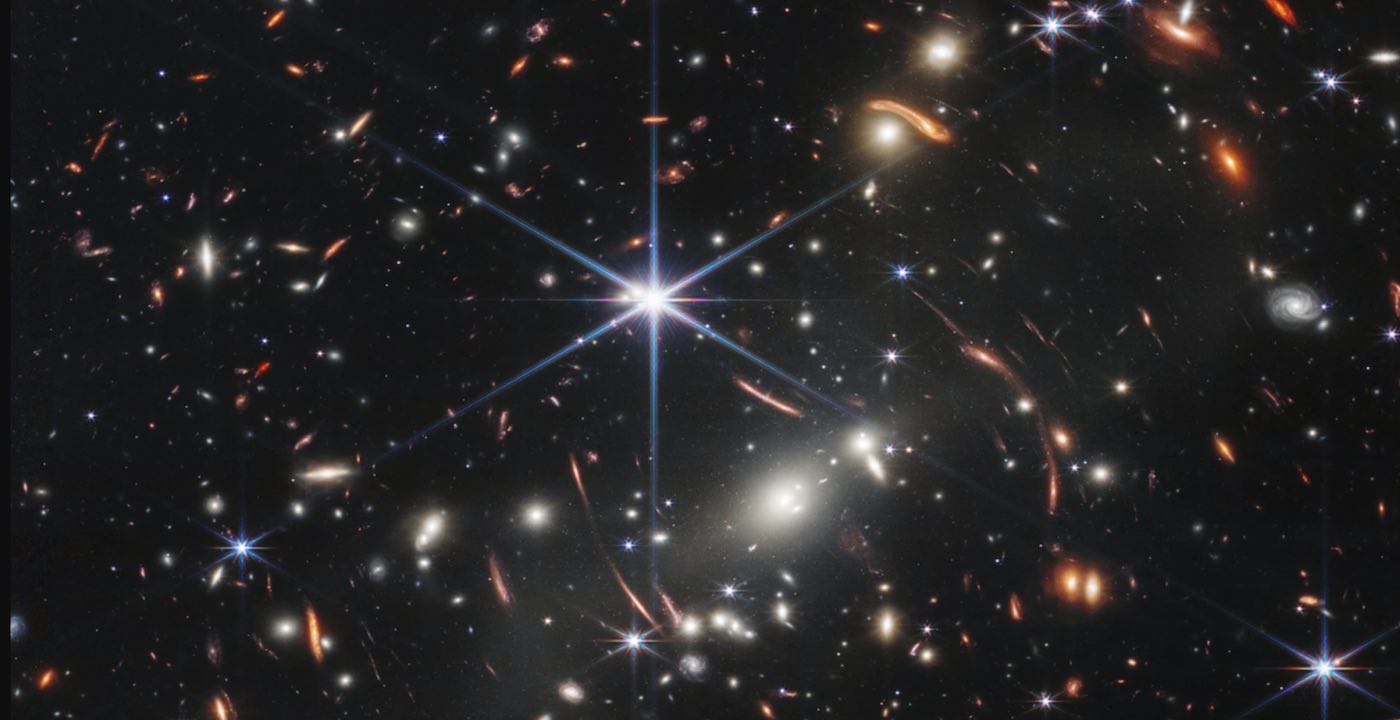
The James Webb Space Telescope recently made its debut with the “Deep Field” image, but as we are absorbed by the beautiful colors of near-infinity, scientists have used the data behind the shot to identify a very old and fascinating object in space.
Named the “Sparkler,” it’s a “globular cluster” nine billion light years away. The light as it’s reaching us is as it was just 4.5 billion years after the Big Bang, meaning just after it became possible for stars to form.
JWST’s high-resolution snapshot contains thousands of galaxies and dense groups of millions of stars, but for co-lead author Dr. Kartheik Iyer, the most interesting were ancient collections of stars from a galaxy’s infancy that can contain clues about its earliest phases of formation and growth.
“Looking at the first images from JWST and discovering old globular clusters around distant galaxies was an incredible moment, one that wasn’t possible with previous Hubble Space Telescope imaging,” said Iyer.
The Sparkler got its name for the compact objects appearing as small yellow-red dots surrounding it, referred to by the researchers as ‘sparkles,’ and which turned out to be the globular clusters.
NASA Administrator Bill Nelson on the unveiling of the telescope’s first images, said that the Deep Field contained very little of the galaxy, approximately as much as if one were to hold a grain of sand on the end of their finger, extend their arm and hand and measure the sand grain against the sky itself.
Incredibly though, examination of the globular clusters spotted in this tiny area of space revealed that five of the clusters were among the oldest ever recorded.

Difficult analysis would follow
“Since we could observe the sparkles across a range of wavelengths, we could model them and better understand their physical properties, like how old they are and how many stars they contain,” said Dr. Iyer.
“We hope the knowledge that globular clusters can be observed at from such great distances with JWST will spur further science and searches for similar objects.”
LOOK: Scientists Stunned by New Jupiter Images With Galaxies ‘Photobombing’ the Webb Telescope
The Milky Way galaxy has about 150 globular clusters. The study in The Astrophysical Journal Letters sheds light on how and when these dense clumps of stars formed.
It is known they can be extremely old. But it is incredibly challenging to measure their ages.
Using very distant globular clusters to age-date the first stars in distant galaxies has not been done before and is only possible with JWST.
WATCH: Travel 2,000 Light-Years in 60 Seconds With New Video From NASA’s Webb Telescope
“These newly identified clusters were formed close to the first time it was even possible to form stars,” said lead author Dr. Lamiya Mowla, of the University of Toronto in Canada. “We are observing the Sparkler as it was nine billion years ago, when the universe was only four-and-a-half billion years old, looking at something that happened a long time ago.”
“Think of it as guessing a person’s age based on their appearance; it’s easy to tell the difference between a five and ten year old, but hard to tell the difference between a 50 and 55 year old.”
In total there were three images of the Sparkler using different wavelengths including infrared and spectrographic.
The Sparkler’s sparks were confirmed through spectroscopy, or the examination of light, to be old globular clusters because the researchers did not observe oxygen emissions with measurable spectra given off by young clusters that are actively forming stars.
While Hubble could barely see the Sparkler, JWST magnified in by a factor of 100 due to an effect called gravitational lensing whereby a galaxy cluster in the foreground distorts what is behind it, much like a giant magnifying glass.
MORE JAMES WEBB NEWS: New Webb Image Captures Clearest View of Neptune’s Rings, Revealing the Ice Giant in Whole New Light
The technique helped them produce three separate images of the Sparkler, allowing astronomers to examine it in greater detail.
“Seeing several of the Sparkler’s globular clusters imaged three times made it clear they are orbiting around the Sparkler galaxy rather than being simply in front of it by chance,” noted co-author Professor Marcin Sawicki, of Saint Mary’s University, Nova Scotia.
SHARE This Science News With Your Social WEBB…




















